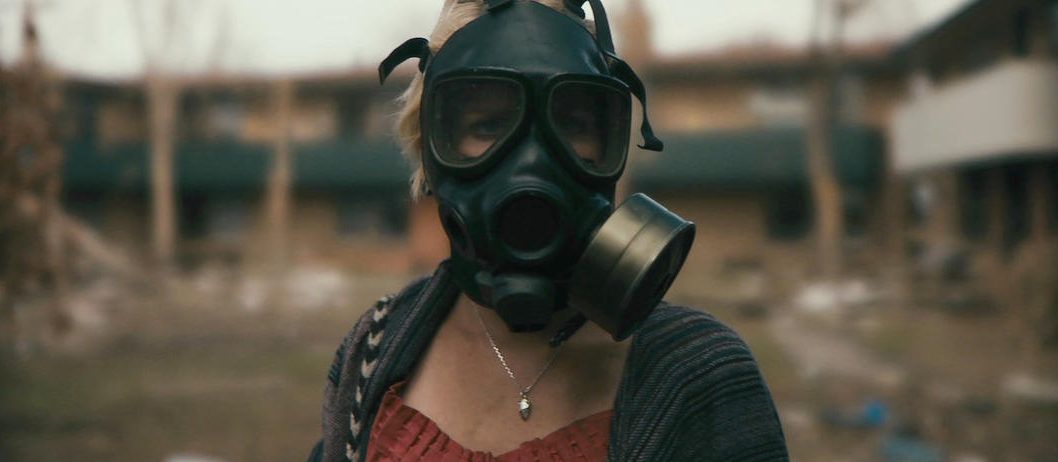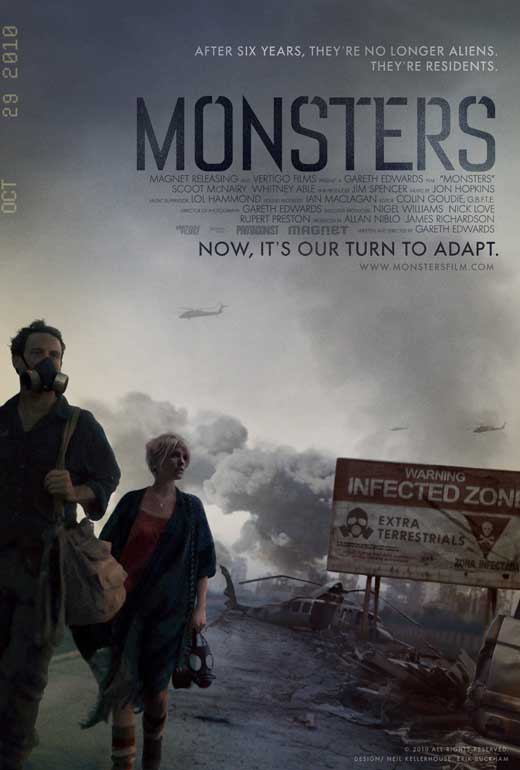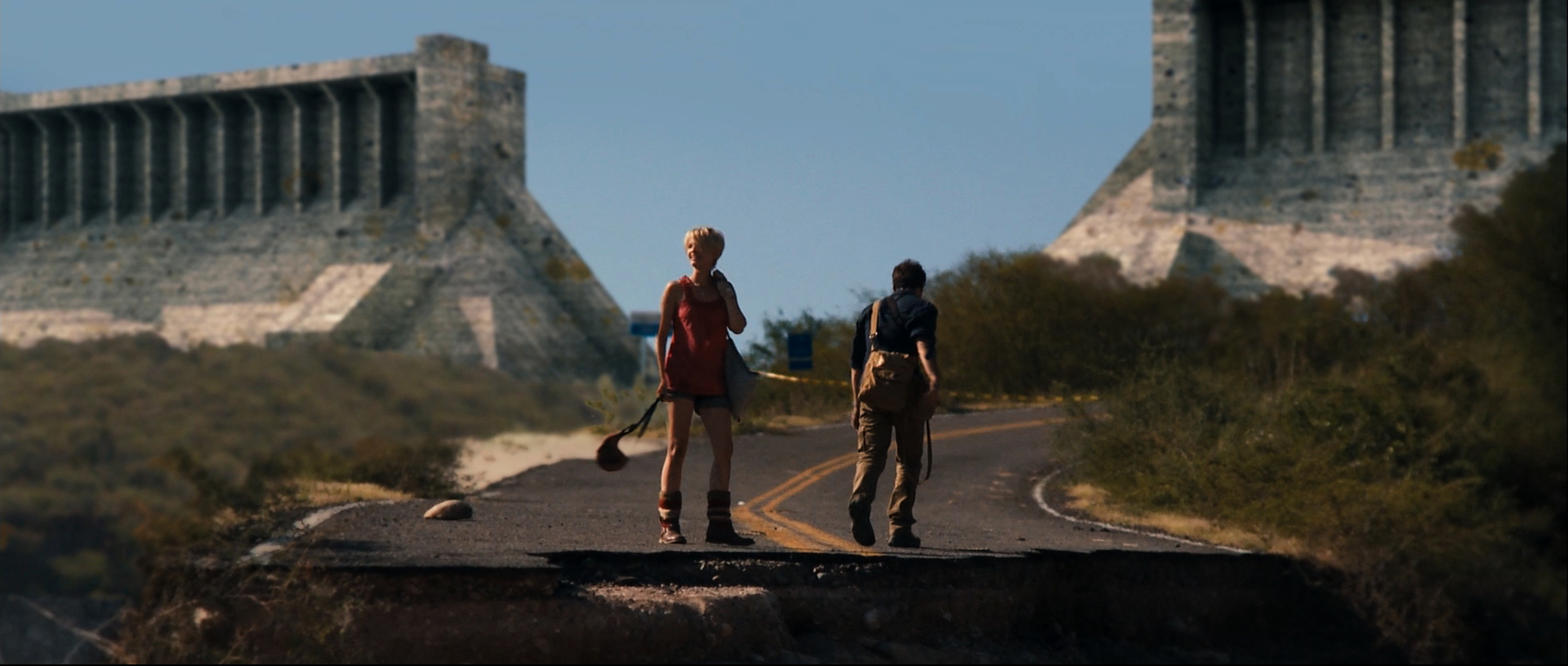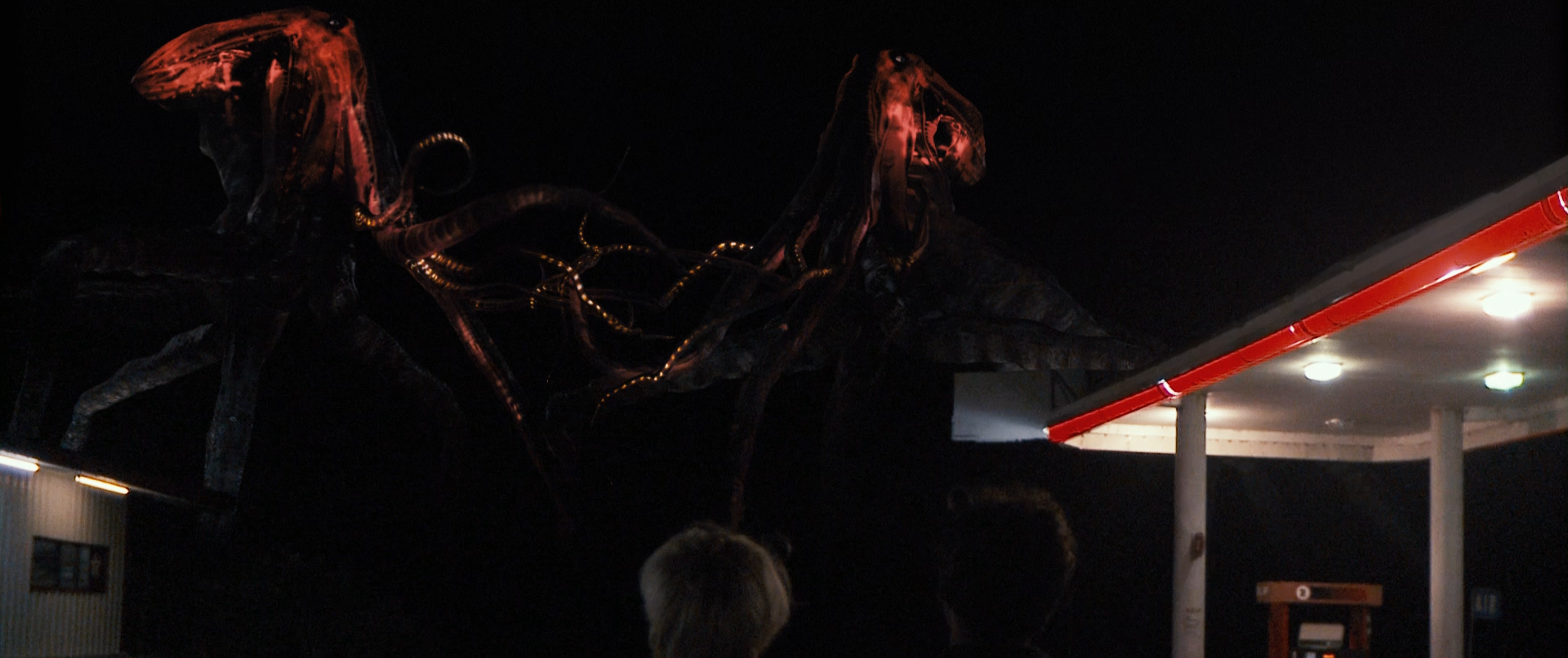

“Do you know how much money your father’s company pays for a picture of a child killed by a creature? $50,000. Do you know how much money I get paid for a picture of a happy child? Nothing. Do you know where that puts me? Photographing tragedy.”
Gareth Edwards’ Monsters is both a rousing testament to creative chutzpah and a cautionary tale about the importance of a strong script. Ambitiously filmed across Central America over the course of three weeks with a minuscule crew, extras found on location, and no permits, it stretches its modest budget to the limit and presents itself with the gravity of a much larger feature. At the same time that the unplanned shoot gives the alien invasion backdrop a dose of gritty realism, its improvisational nature dampens the dramatic appeal as the hundreds of hours of footage captured on the cross-continental trek had to be whittled down to a mere hour and a half that conveys the basics of a plot but only goes skin deep on the central love story. This would not be a problem if the film was otherwise exciting, but the flimsy romance detrimentally overshadows the sci-fi elements that serve as the film’s selling point. Edwards deserves credit for his audacious endeavor and for serving as writer, director, cinematographer, and one-man visual effects crew; but the lack of depth in the narrative and shallow dialogue ultimately comes back to bite him.
As we are informed by several screens of text, a handful of years prior to the events depicted in the film a species of hovering, tentacled aliens arose from the smoldering ruins of a crashed NASA probe. The authorities quickly outlined an “infected zone” along the U.S.-Mexico border, sent in the military to engage with the creatures, and the United States built a massive wall to cut off their expansion, leaving the borderlands to develop into a hostile area. It’s there that the strange creatures abide, doing their dance-like mating rituals, laying their fungus-looking eggs, ripping apart vehicles and airplanes, and driving any stranded survivors out of their minds. But we only see this in short glimpses because our characters only travel to the infected zone once the standoff has reached a semi-equilibrium over the course of years.

The film opens with its chronological ending—a brief but hectic sequence, shot in the dark with green-tinted infrared shaky cam as a military rescue team shouts orders and an alien creature attacks, prompting a coordinated airstrike. Then it shifts its focus away from intense action as it jumps backwards in time. A photojournalist (Scoot McNairy), who has found himself earning a living snapping photos of the stacks of bodies left from monster attacks and friendly fire on the periphery of the forbidden area, is tasked with escorting his employer’s daughter (Whitney Able) from a Mexican hospital back to the U.S. The only thing that stands in his way is the infected zone, but a sense of urgency is layered onto the ordeal when an impending lockdown of air and sea travel is announced. Through a combination of train rides and hitchhiking, a ridiculous lapse of judgement that sees a prostitute running off with both of their passports, and the pawning of an engagement ring, the odd couple find themselves with guided passage across Mexico.
Without the knowledge that Edwards shot this on the fly and did all the effects himself on a laptop computer in his bedroom, it might not strike the viewer as anything special. Indeed, as imaginative and technologically savvy as one must be to coax a basic system to achieve such splendid effects, the exotic beasts are rarely more than a backdrop for the bland romantic travelogue that is treated with misguided earnestness. The dialogue is shallow and does not develop the characters and the matter-of-fact presentation prevents anything resembling a cinematic sweep from getting off the ground—although Jon Hopkins’ majestic synths do provide a steadying presence throughout that uplifts some of the less compelling stretches.

Even though Edwards doesn’t really deliver on the promise of his premise and marketing materials, I still appreciate the subversive direction he tried to go. By pushing his aliens to the margin, teasing us with their presence, treating them as a dangerous but not necessarily evil force, and finally revealing them in an awe-inspiring moment, he proved that his instincts are excellent. There are other flashes of ingenuity sprinkled throughout. I particularly enjoyed a moment that subtly pays homage to Aguirre, the Wrath of God. But the intimate, contemplative journey that takes the place of genre conventions does not have much to offer in their stead. It dabbles in horror, post-apocalyptic rumination, romance. At times it even feels like a documentary that’s simply chronicling their routine travels. But one can only take so much rubble and graffiti in lieu of narrative before the novelty wears off.
And yet one must consider that, had Edwards been given a budget of $10M or whatever, which comes with a commensurate increase in studio oversight, every unique, jagged feature of Monsters would have been sanded down and smoothed out. The script would have been more polished, the shoot streamlined. McNairy probably wouldn’t have been able to talk Edwards into casting his wife as his co-star. But then it would have had some dumb MacGuffin, a couple of huge showdowns, excessive and prominent CGI, the whole works. In other words, it would have been more aligned with the endless stream of tasteless sci-fi spectacles and questionably not worth watching at all. I don’t think Monsters is a home run, but Edwards was swinging for the fences with a wiffle ball bat and hit a double so I’ve still got to take my hat off to him. Monsters was his debut and he’s only made franchise films since, which are usually not high on my watch list, but I think I might have to check them out.